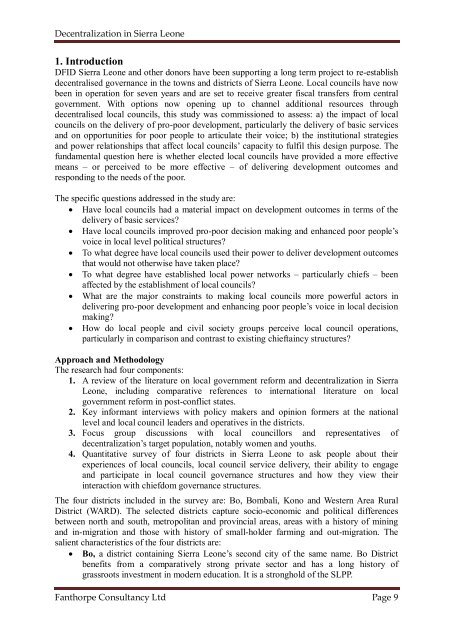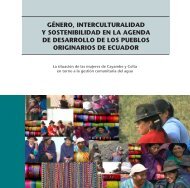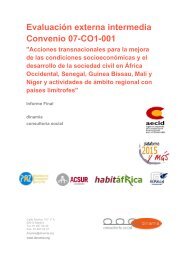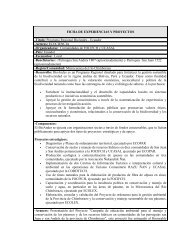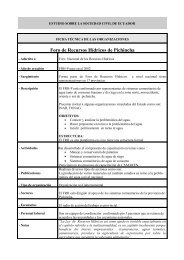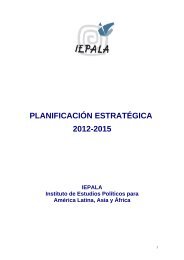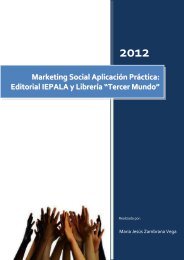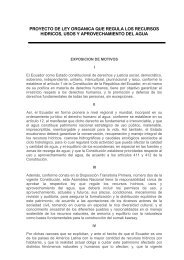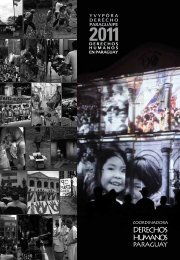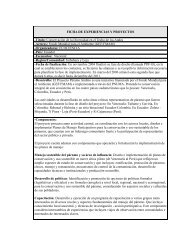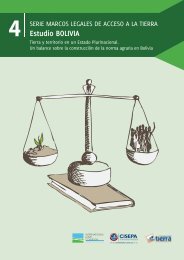Decentralization in Sierra Leone - Research for Development
Decentralization in Sierra Leone - Research for Development
Decentralization in Sierra Leone - Research for Development
You also want an ePaper? Increase the reach of your titles
YUMPU automatically turns print PDFs into web optimized ePapers that Google loves.
<strong>Decentralization</strong> <strong>in</strong> <strong>Sierra</strong> <strong>Leone</strong>1. IntroductionDFID <strong>Sierra</strong> <strong>Leone</strong> and other donors have been support<strong>in</strong>g a long term project to re-establishdecentralised governance <strong>in</strong> the towns and districts of <strong>Sierra</strong> <strong>Leone</strong>. Local councils have nowbeen <strong>in</strong> operation <strong>for</strong> seven years and are set to receive greater fiscal transfers from centralgovernment. With options now open<strong>in</strong>g up to channel additional resources throughdecentralised local councils, this study was commissioned to assess: a) the impact of localcouncils on the delivery of pro-poor development, particularly the delivery of basic servicesand on opportunities <strong>for</strong> poor people to articulate their voice; b) the <strong>in</strong>stitutional strategiesand power relationships that affect local councils’ capacity to fulfil this design purpose. Thefundamental question here is whether elected local councils have provided a more effectivemeans – or perceived to be more effective – of deliver<strong>in</strong>g development outcomes andrespond<strong>in</strong>g to the needs of the poor.The specific questions addressed <strong>in</strong> the study are: Have local councils had a material impact on development outcomes <strong>in</strong> terms of thedelivery of basic services? Have local councils improved pro-poor decision mak<strong>in</strong>g and enhanced poor people’svoice <strong>in</strong> local level political structures? To what degree have local councils used their power to deliver development outcomesthat would not otherwise have taken place? To what degree have established local power networks – particularly chiefs – beenaffected by the establishment of local councils? What are the major constra<strong>in</strong>ts to mak<strong>in</strong>g local councils more powerful actors <strong>in</strong>deliver<strong>in</strong>g pro-poor development and enhanc<strong>in</strong>g poor people’s voice <strong>in</strong> local decisionmak<strong>in</strong>g? How do local people and civil society groups perceive local council operations,particularly <strong>in</strong> comparison and contrast to exist<strong>in</strong>g chiefta<strong>in</strong>cy structures?Approach and MethodologyThe research had four components:1. A review of the literature on local government re<strong>for</strong>m and decentralization <strong>in</strong> <strong>Sierra</strong><strong>Leone</strong>, <strong>in</strong>clud<strong>in</strong>g comparative references to <strong>in</strong>ternational literature on localgovernment re<strong>for</strong>m <strong>in</strong> post-conflict states.2. Key <strong>in</strong><strong>for</strong>mant <strong>in</strong>terviews with policy makers and op<strong>in</strong>ion <strong>for</strong>mers at the nationallevel and local council leaders and operatives <strong>in</strong> the districts.3. Focus group discussions with local councillors and representatives ofdecentralization’s target population, notably women and youths.4. Quantitative survey of four districts <strong>in</strong> <strong>Sierra</strong> <strong>Leone</strong> to ask people about theirexperiences of local councils, local council service delivery, their ability to engageand participate <strong>in</strong> local council governance structures and how they view their<strong>in</strong>teraction with chiefdom governance structures.The four districts <strong>in</strong>cluded <strong>in</strong> the survey are: Bo, Bombali, Kono and Western Area RuralDistrict (WARD). The selected districts capture socio-economic and political differencesbetween north and south, metropolitan and prov<strong>in</strong>cial areas, areas with a history of m<strong>in</strong><strong>in</strong>gand <strong>in</strong>-migration and those with history of small-holder farm<strong>in</strong>g and out-migration. Thesalient characteristics of the four districts are: Bo, a district conta<strong>in</strong><strong>in</strong>g <strong>Sierra</strong> <strong>Leone</strong>’s second city of the same name. Bo Districtbenefits from a comparatively strong private sector and has a long history ofgrassroots <strong>in</strong>vestment <strong>in</strong> modern education. It is a stronghold of the SLPP.Fanthorpe Consultancy Ltd Page 9


